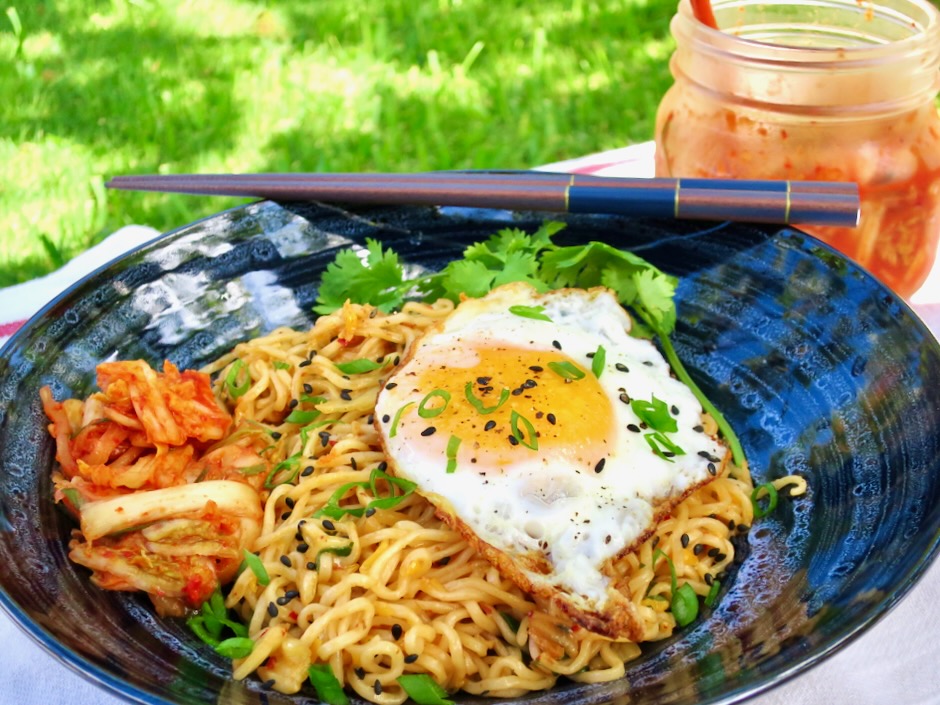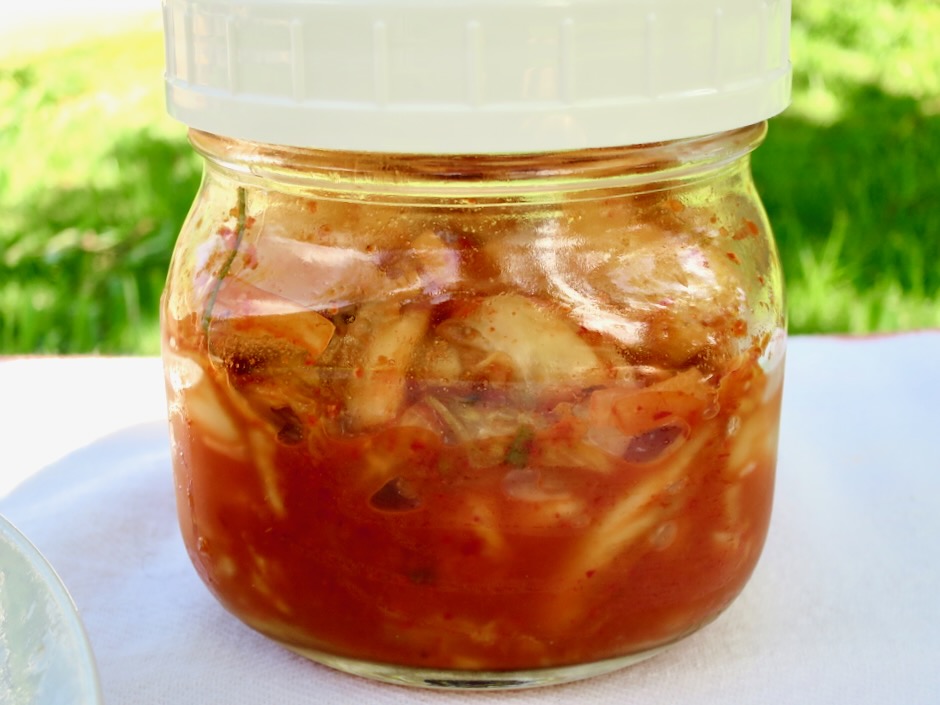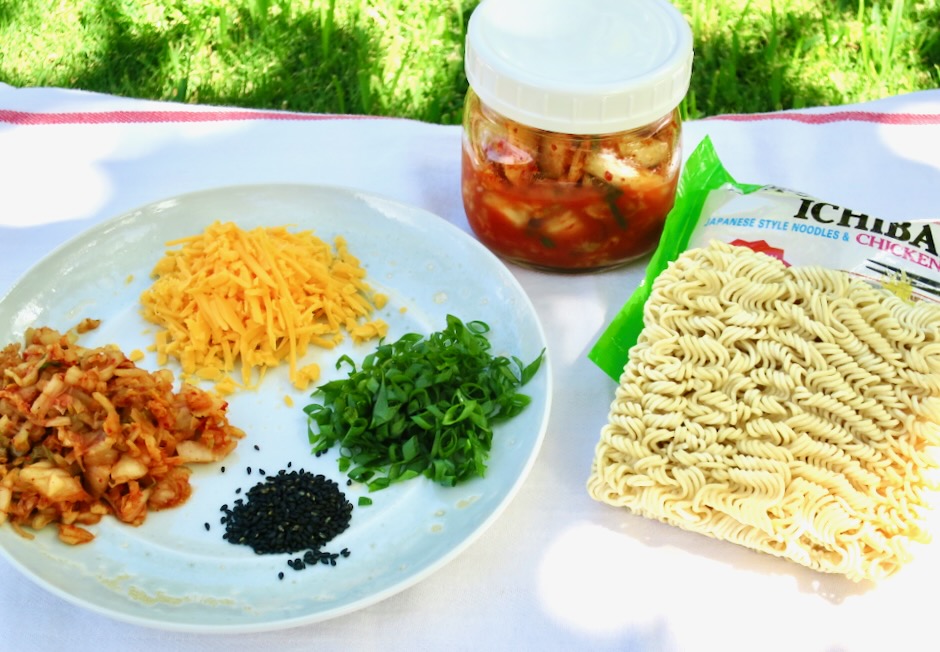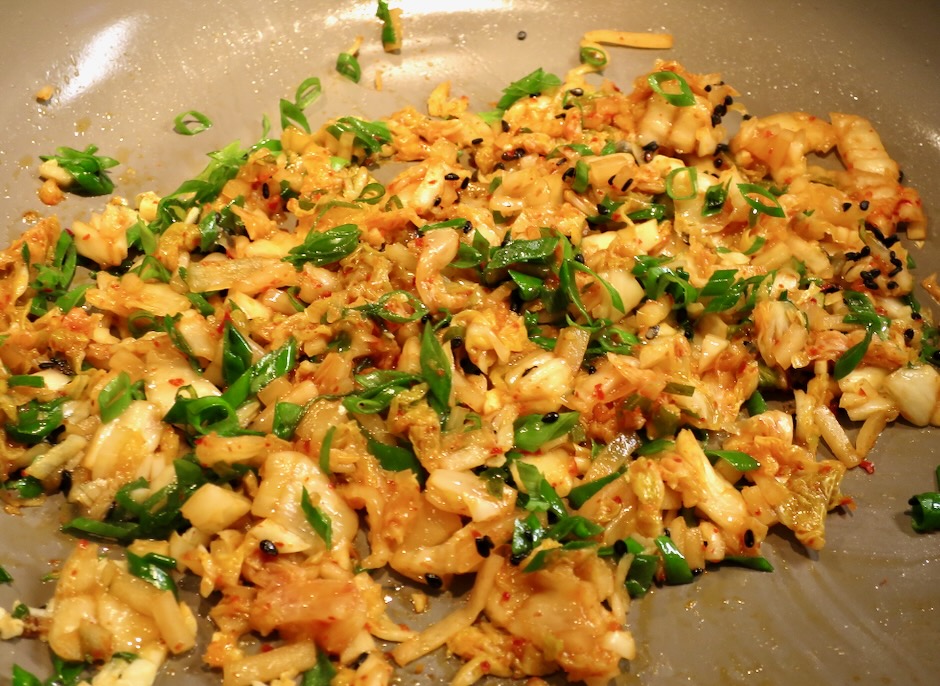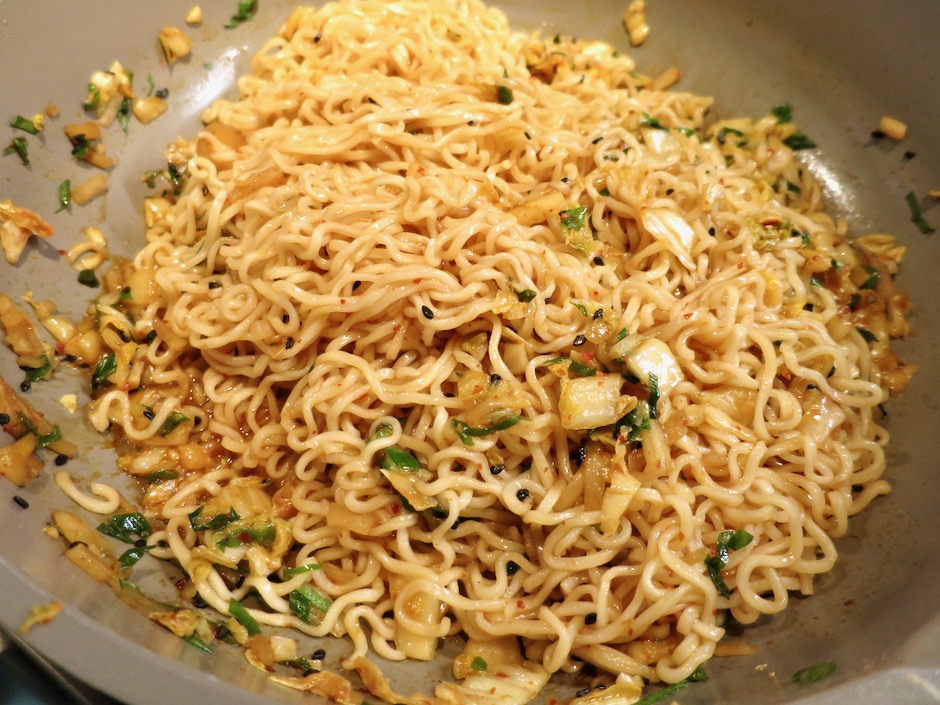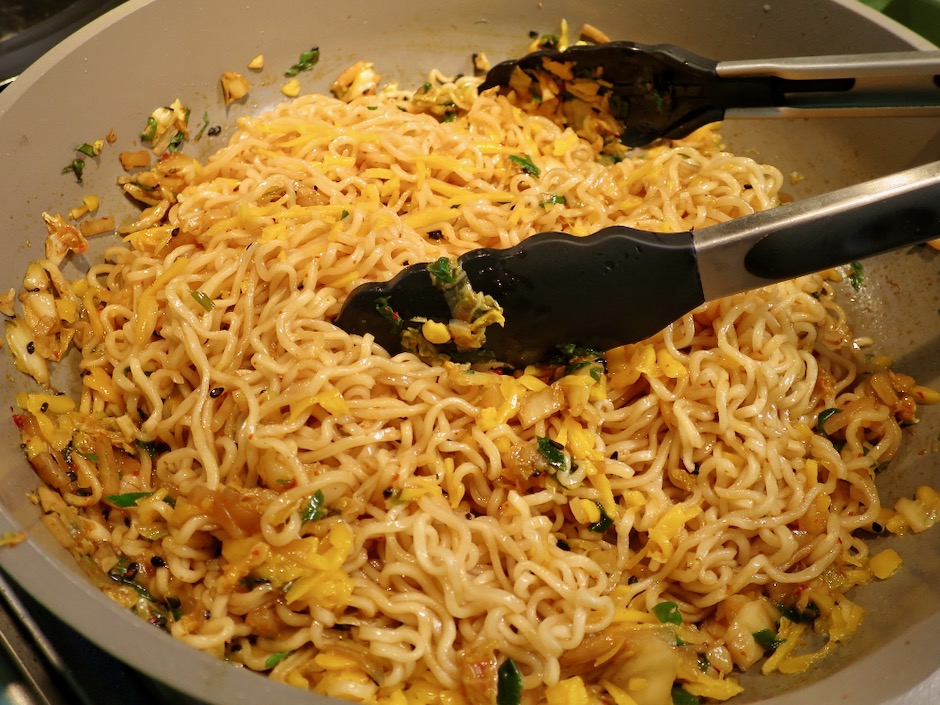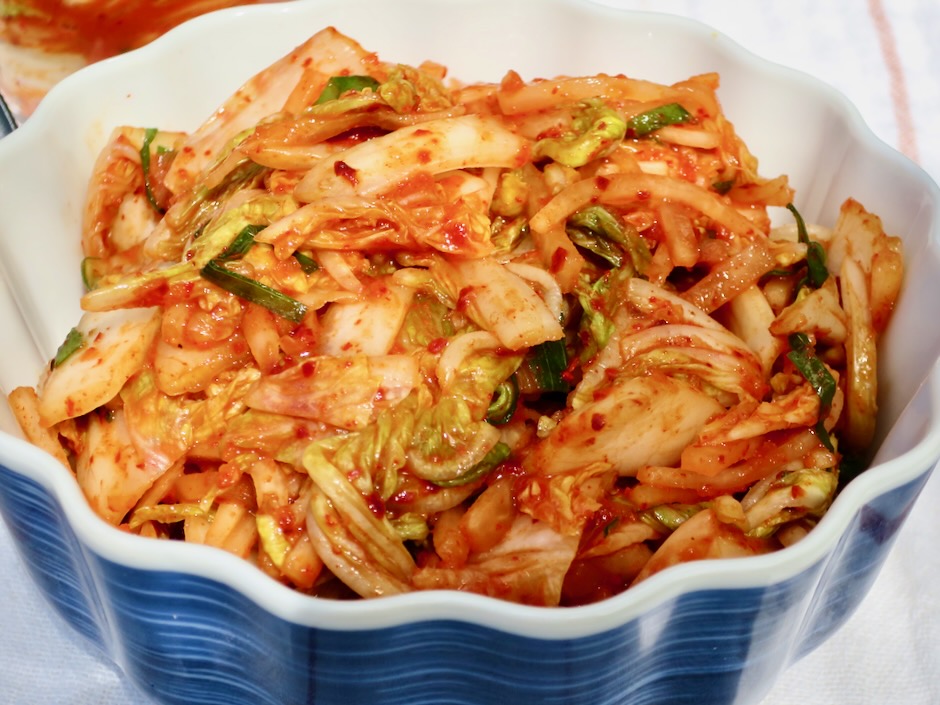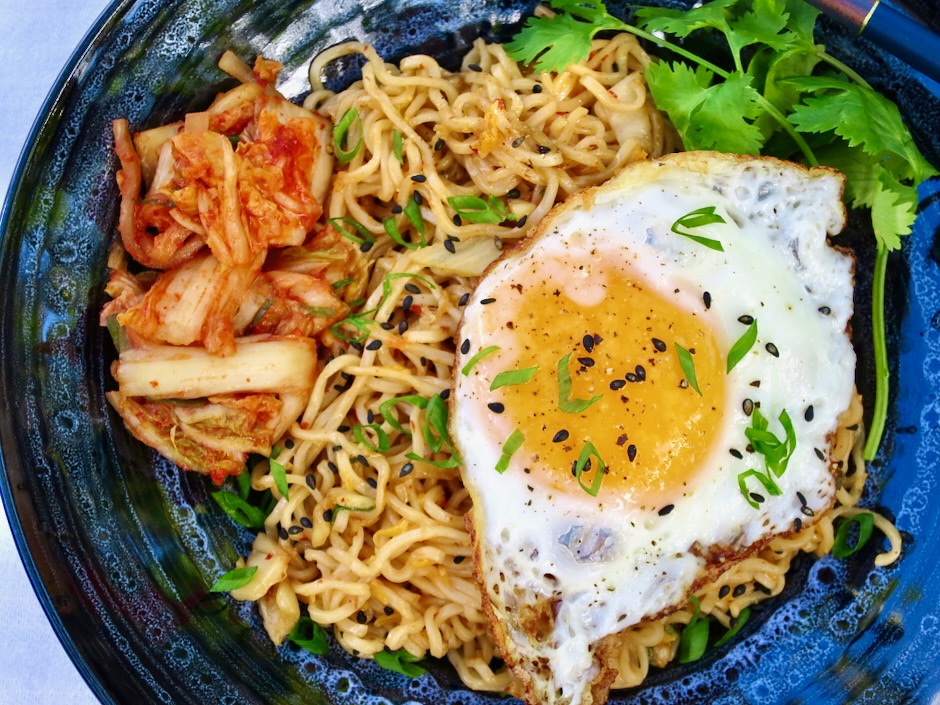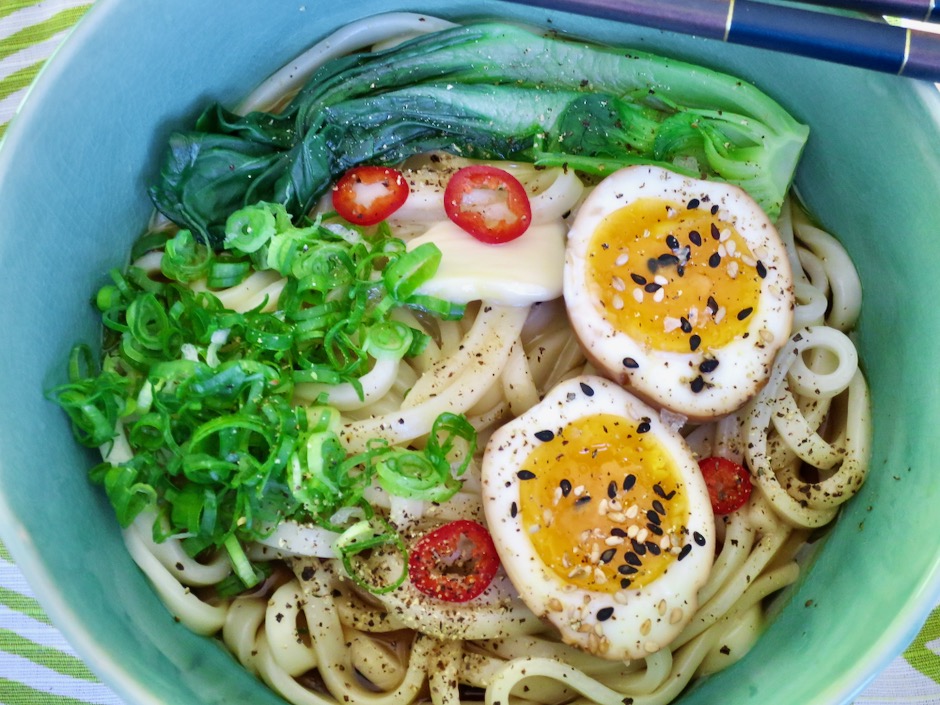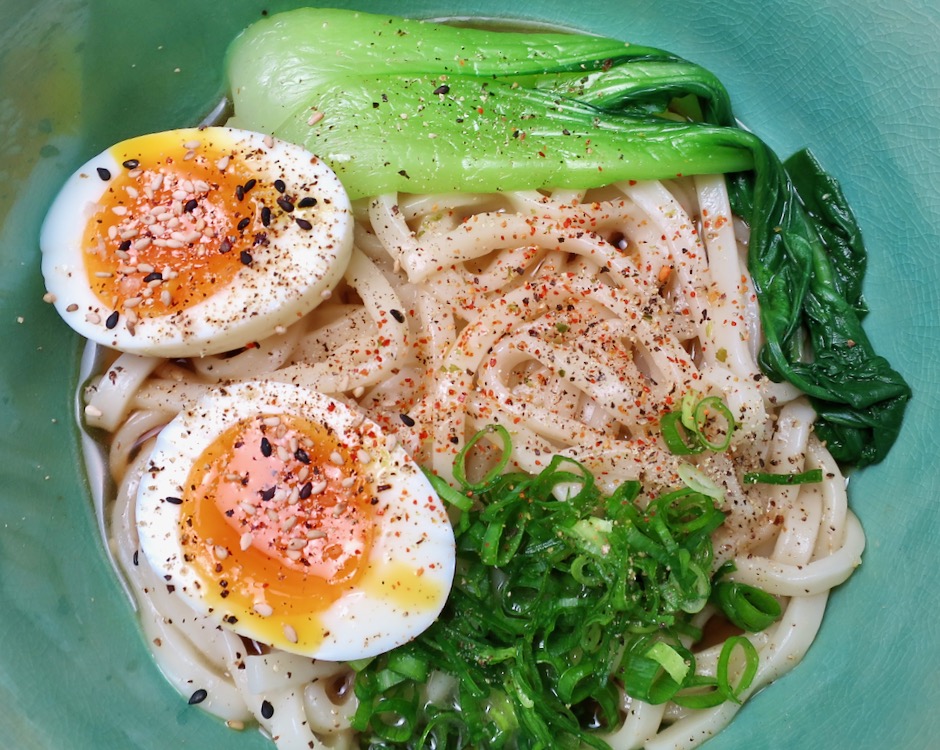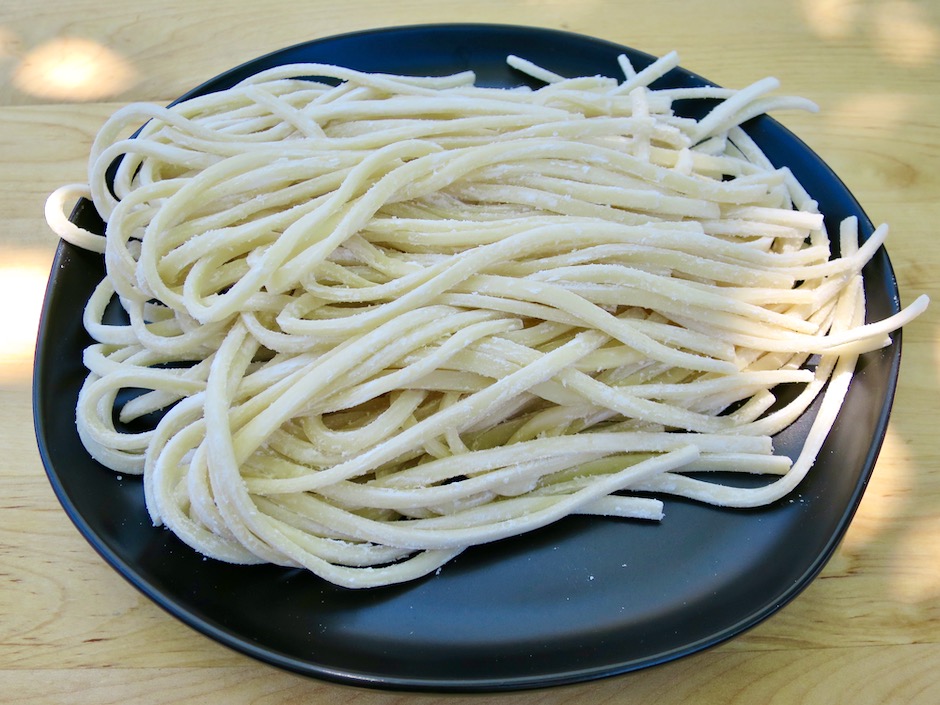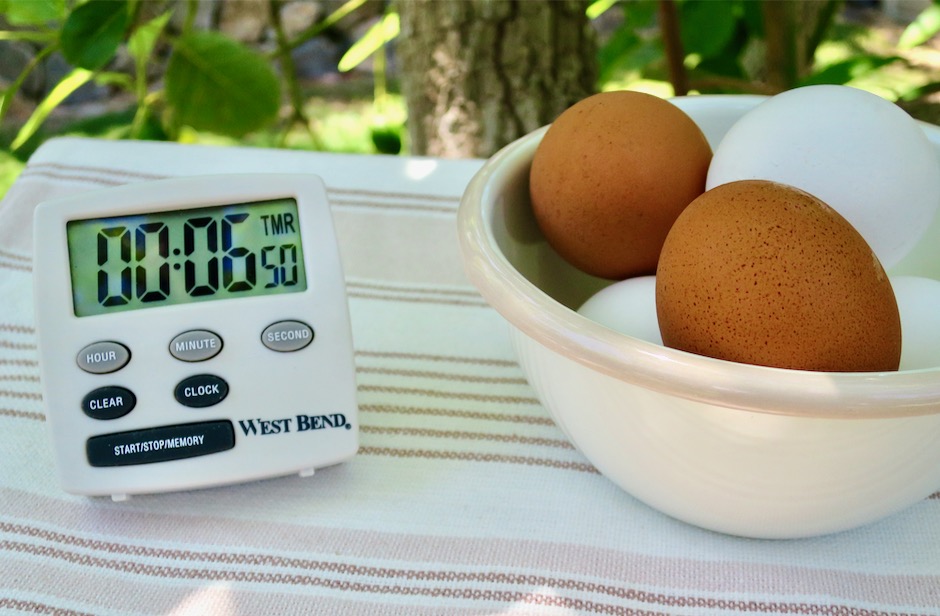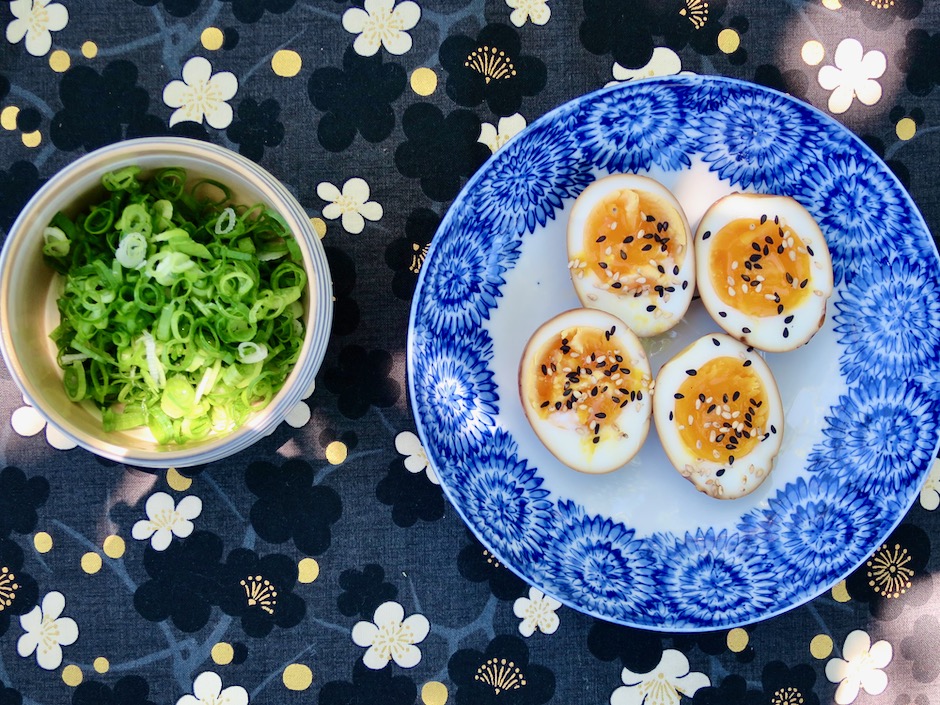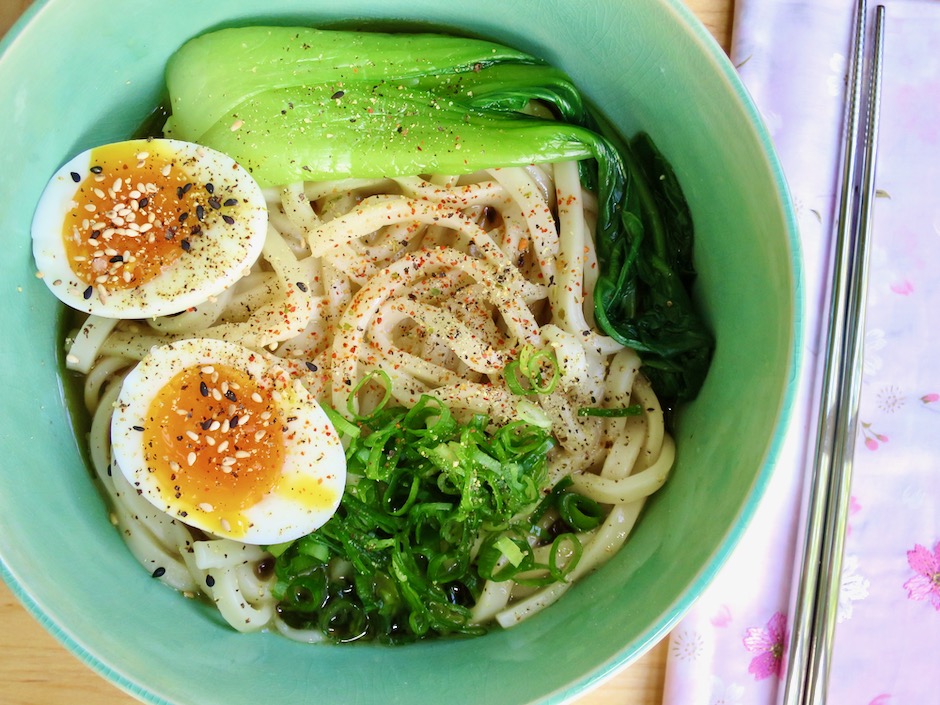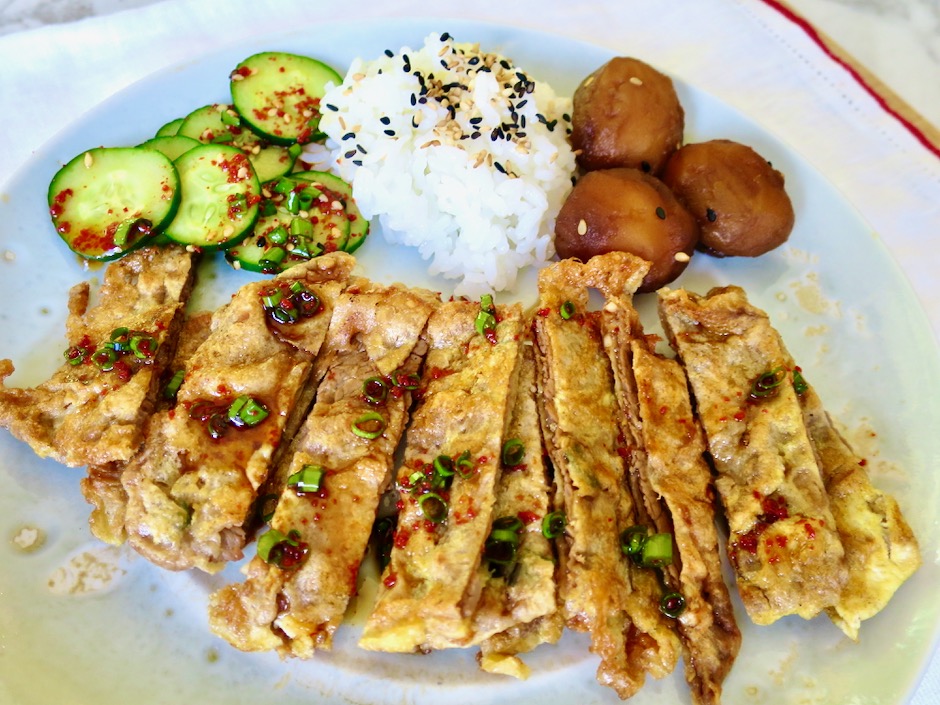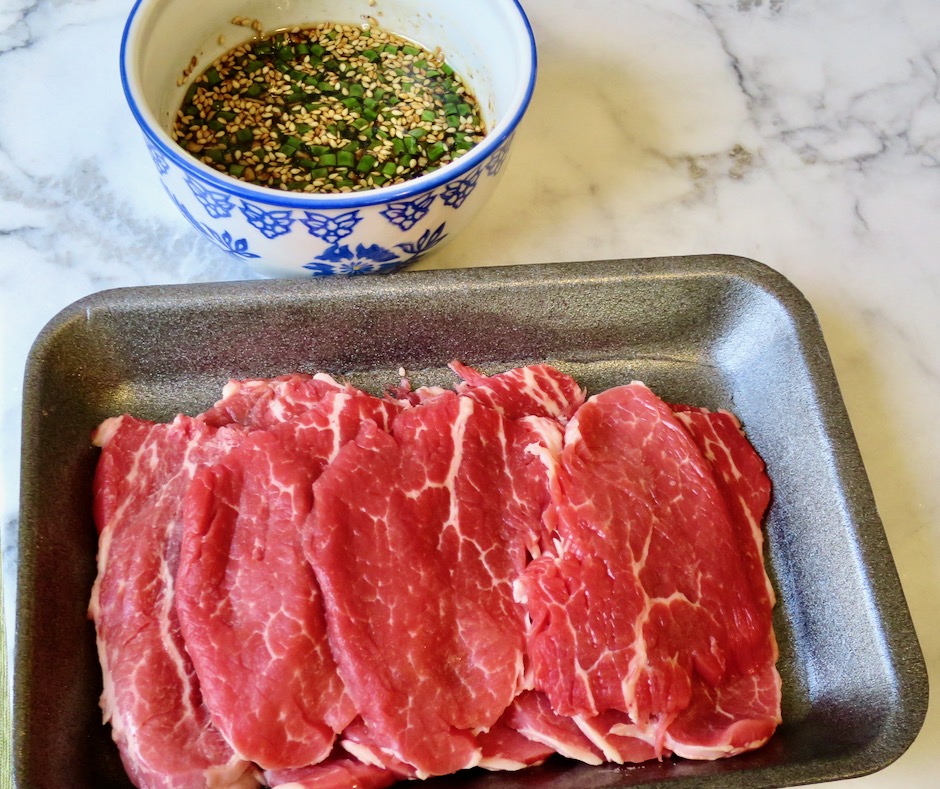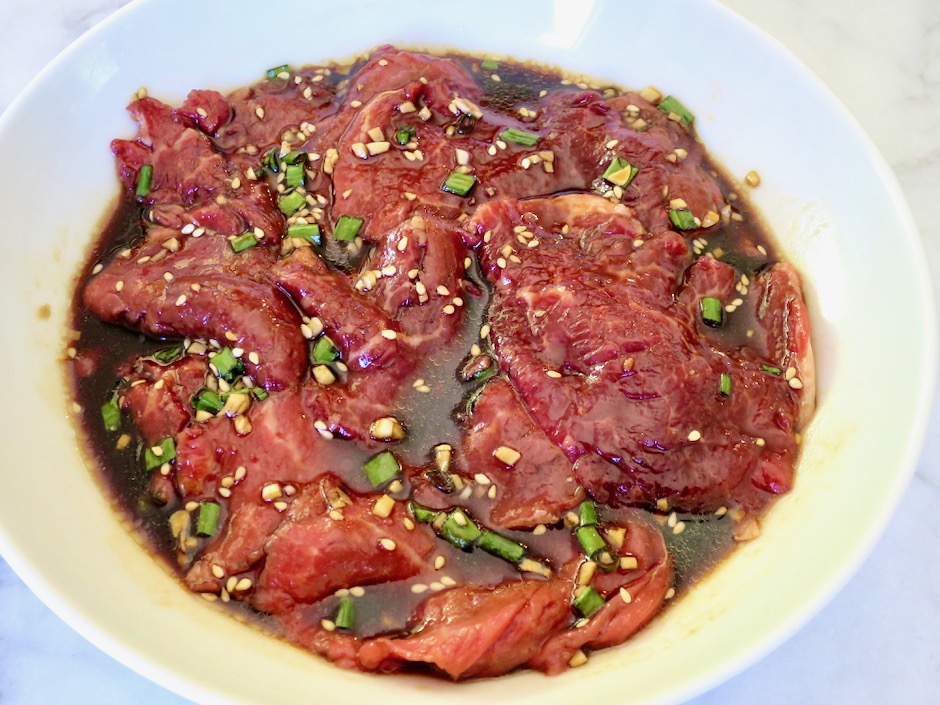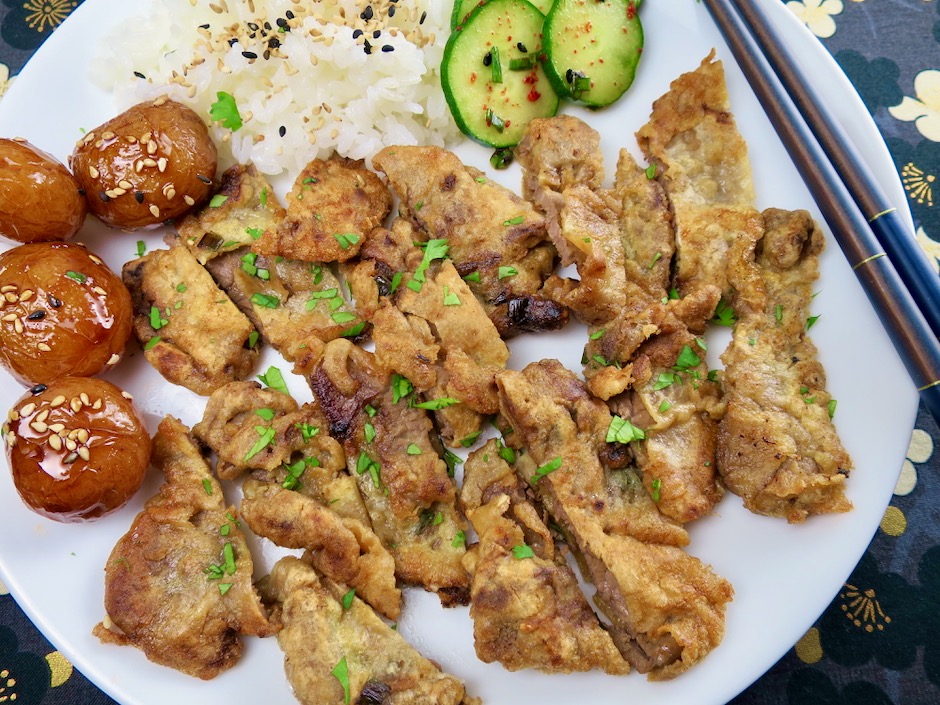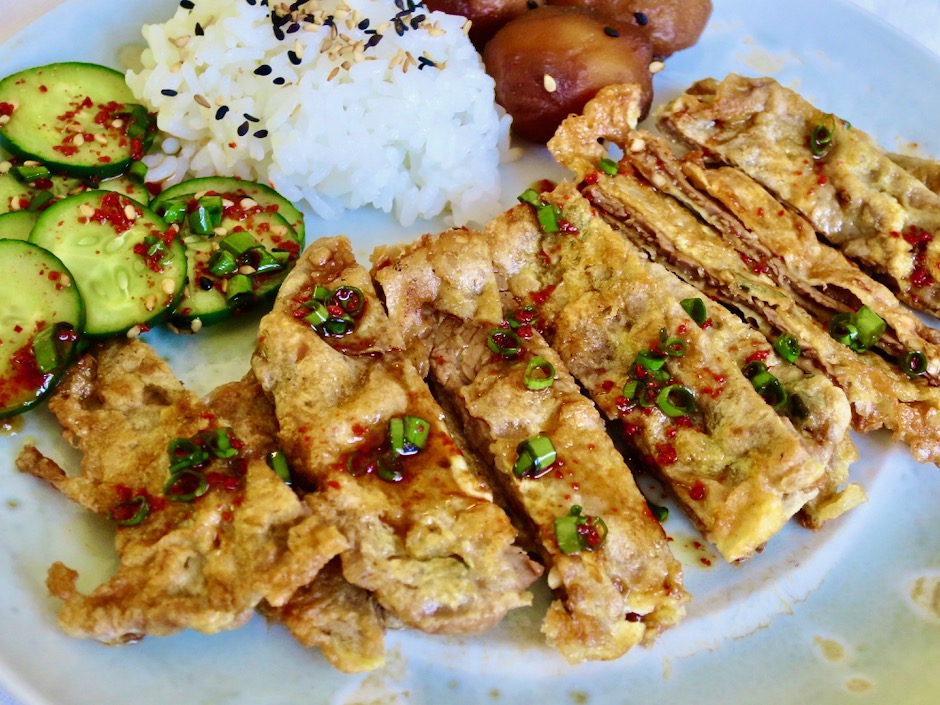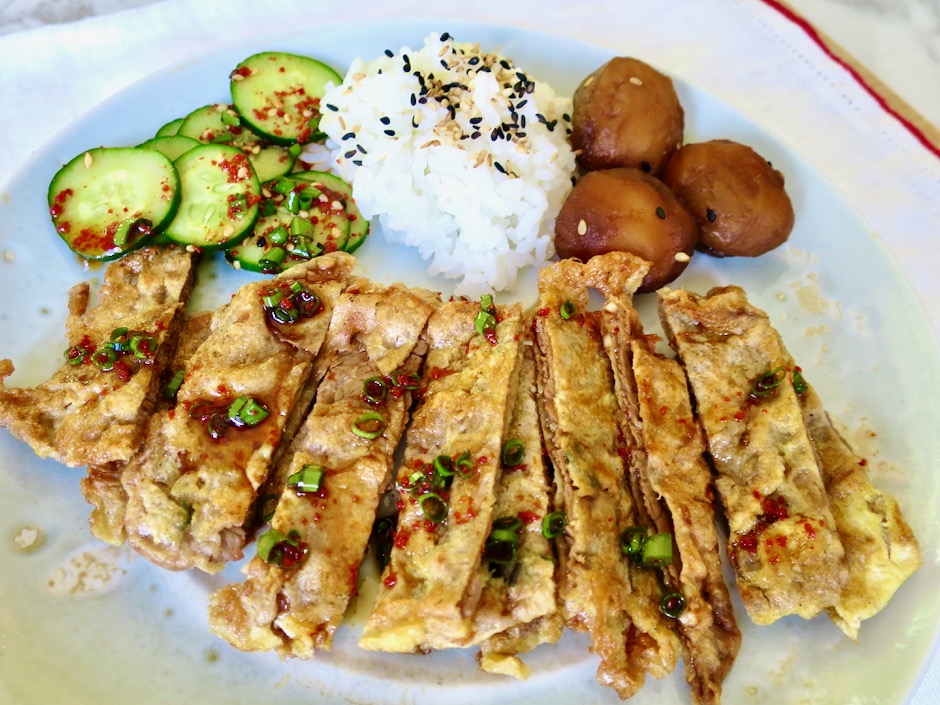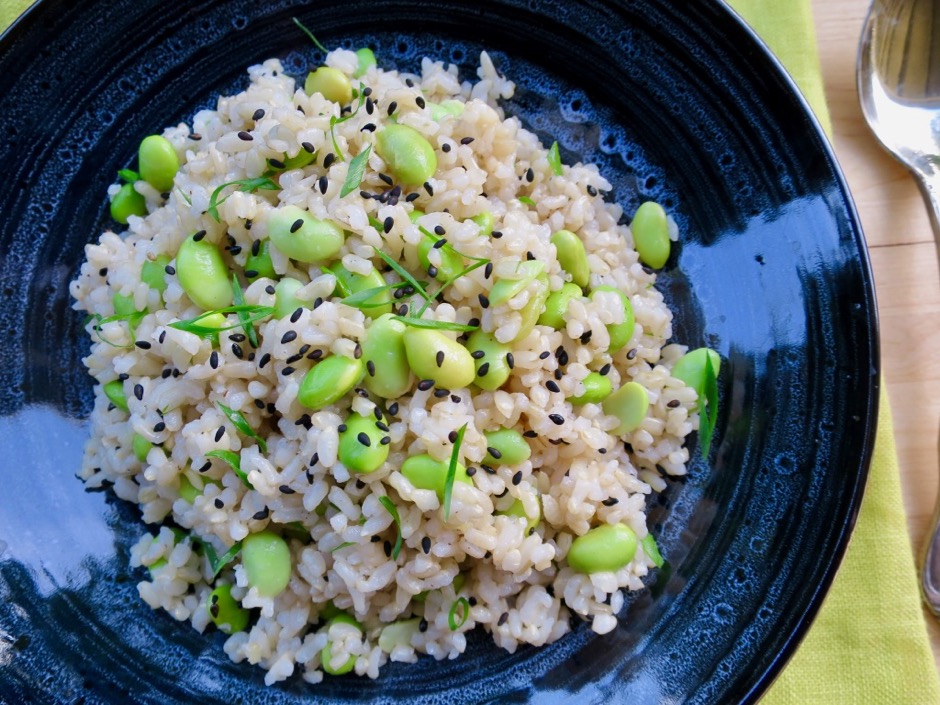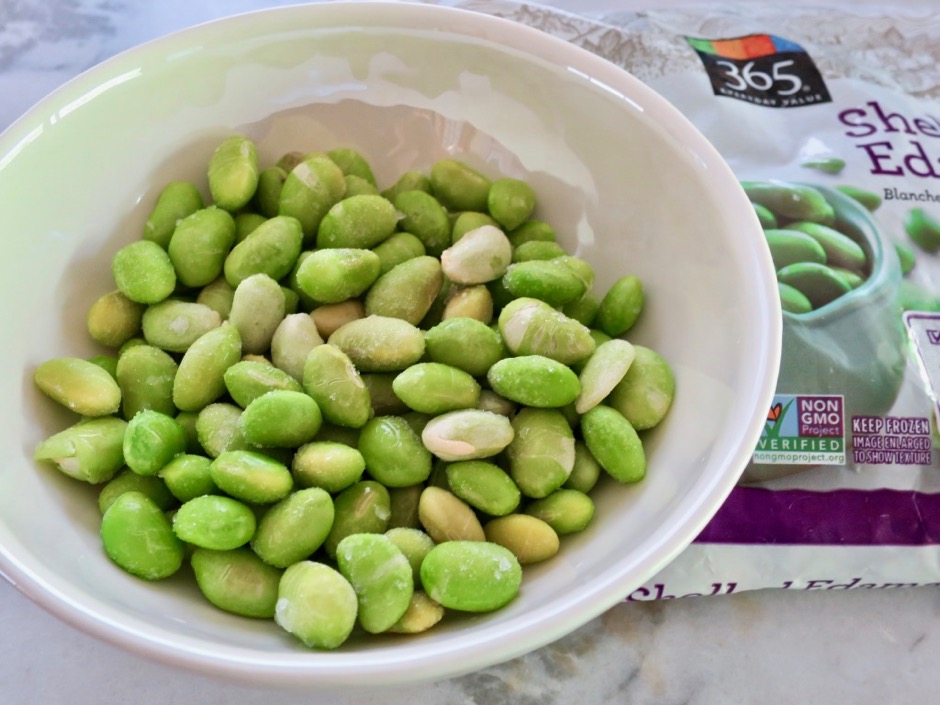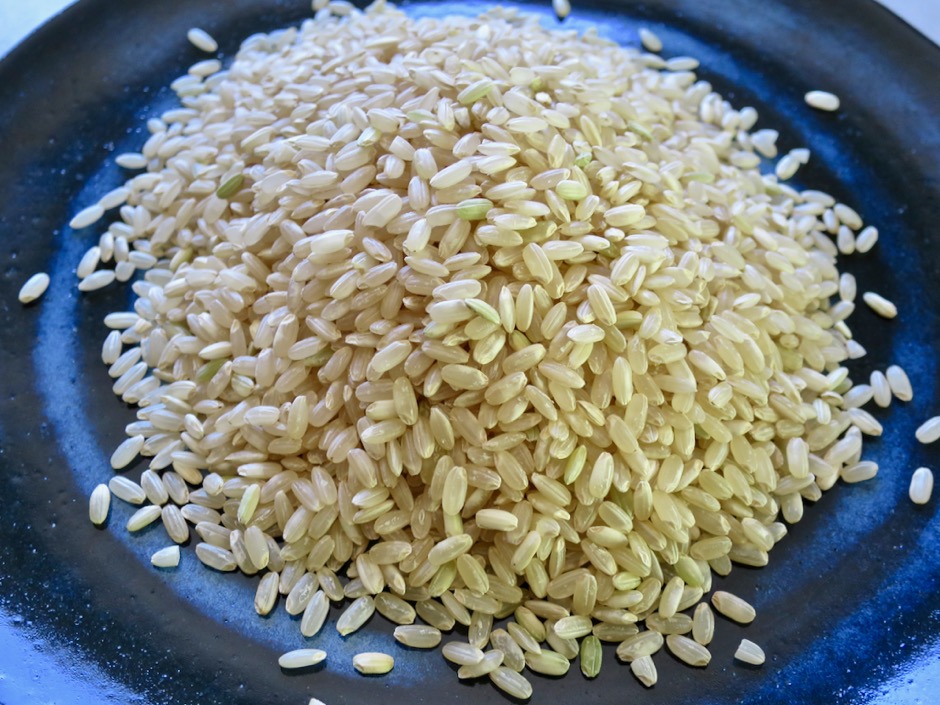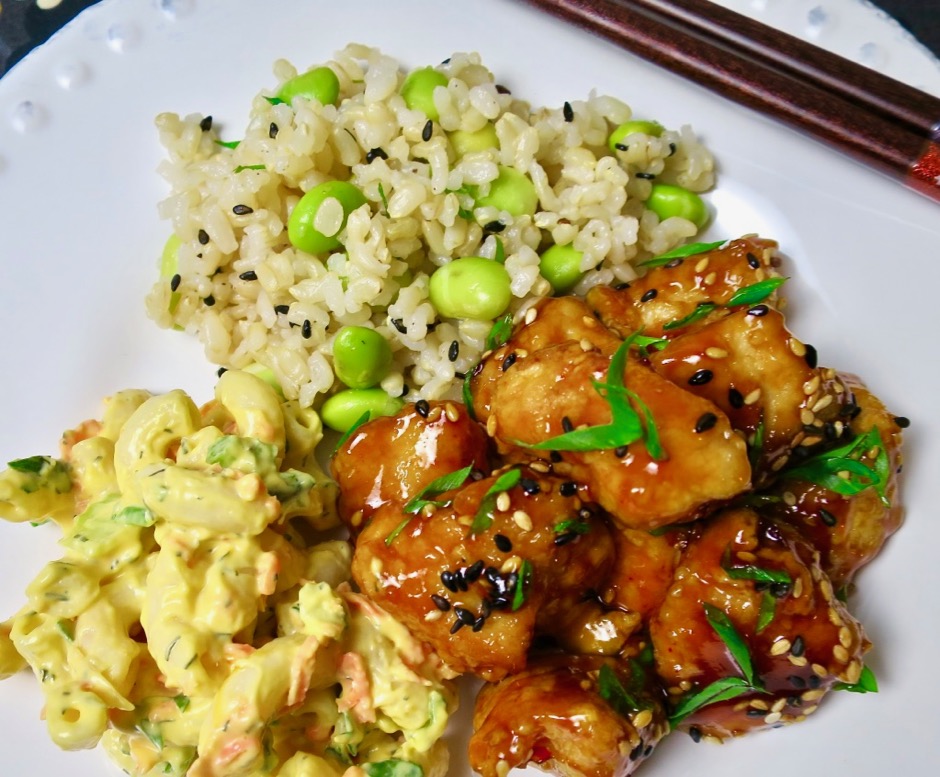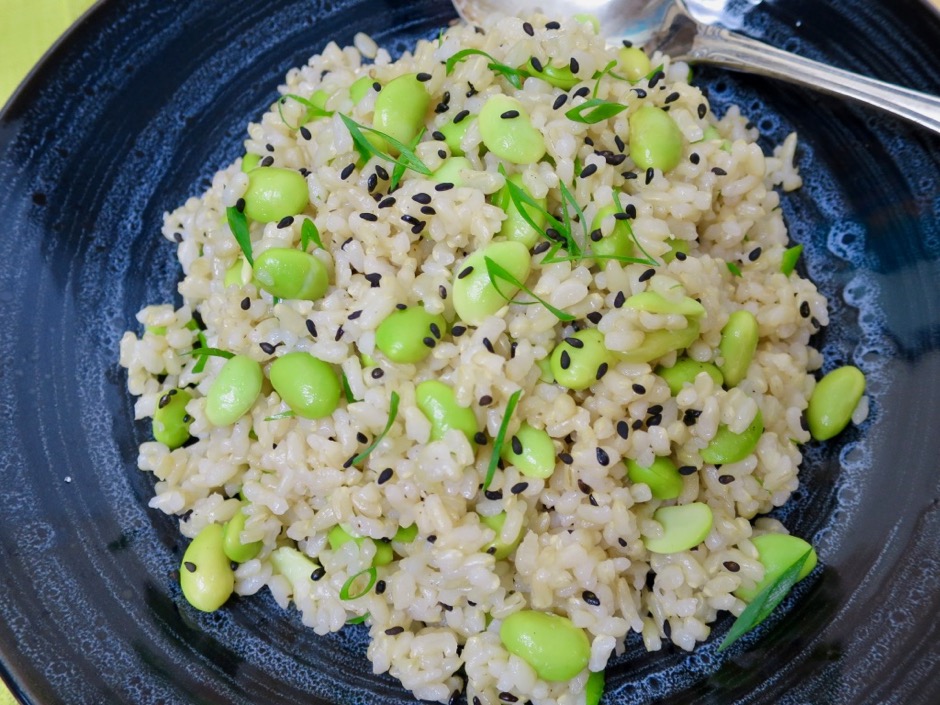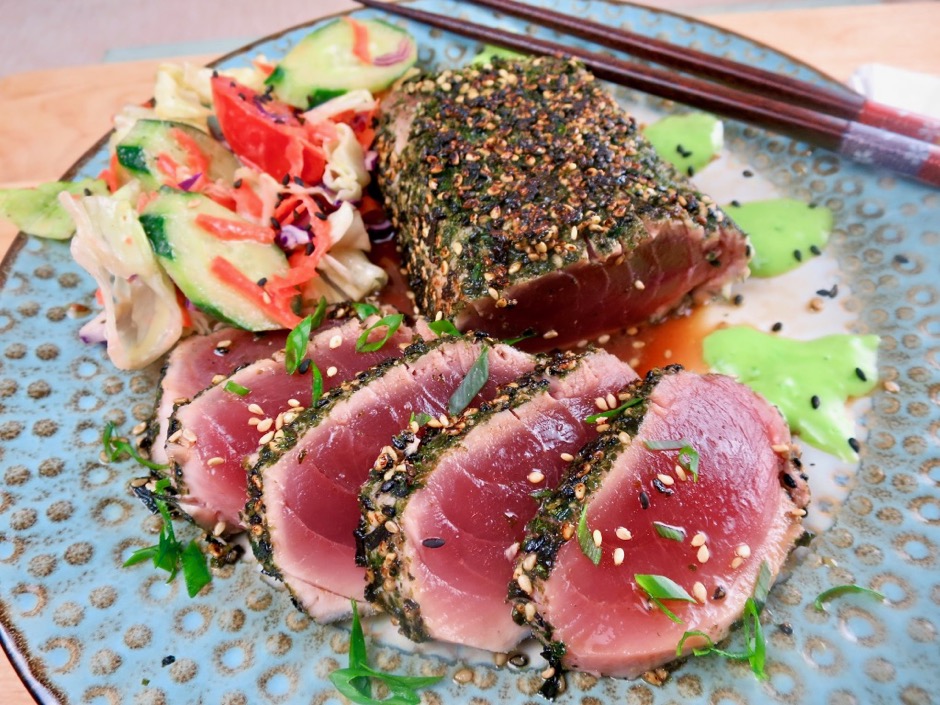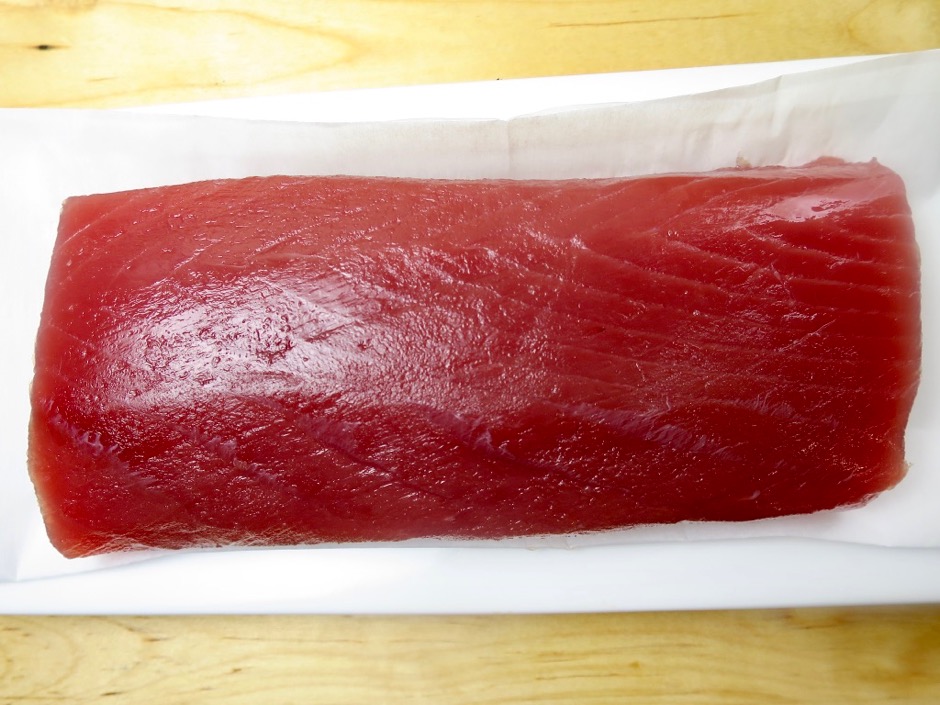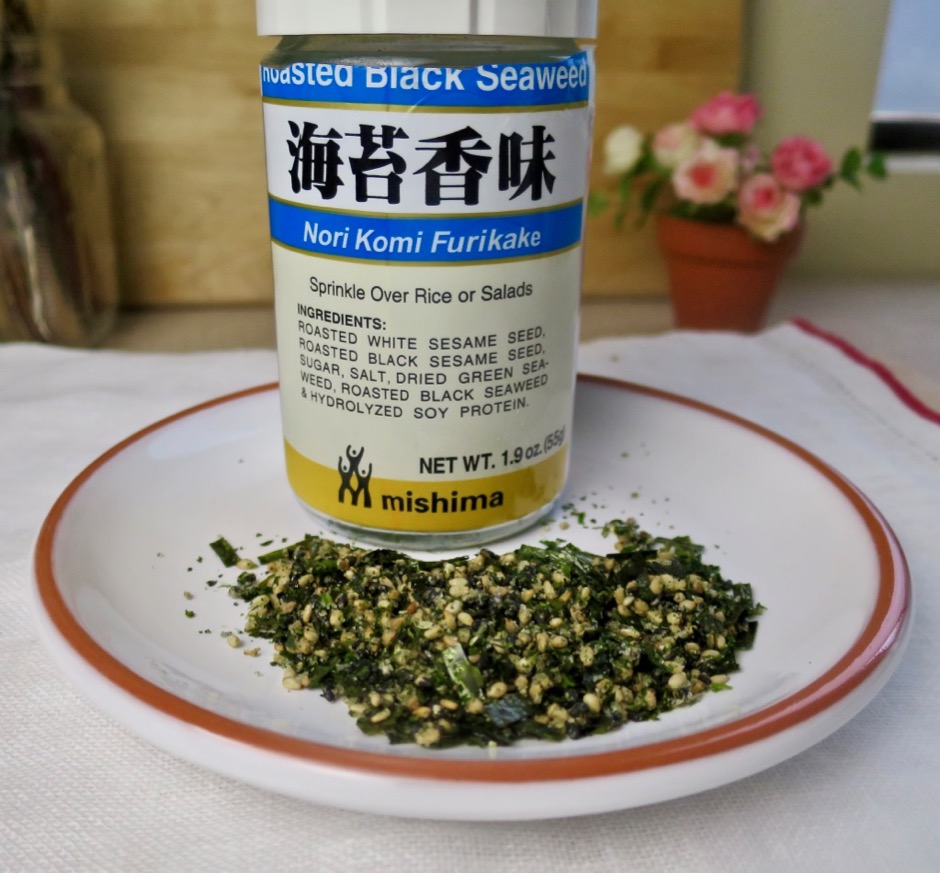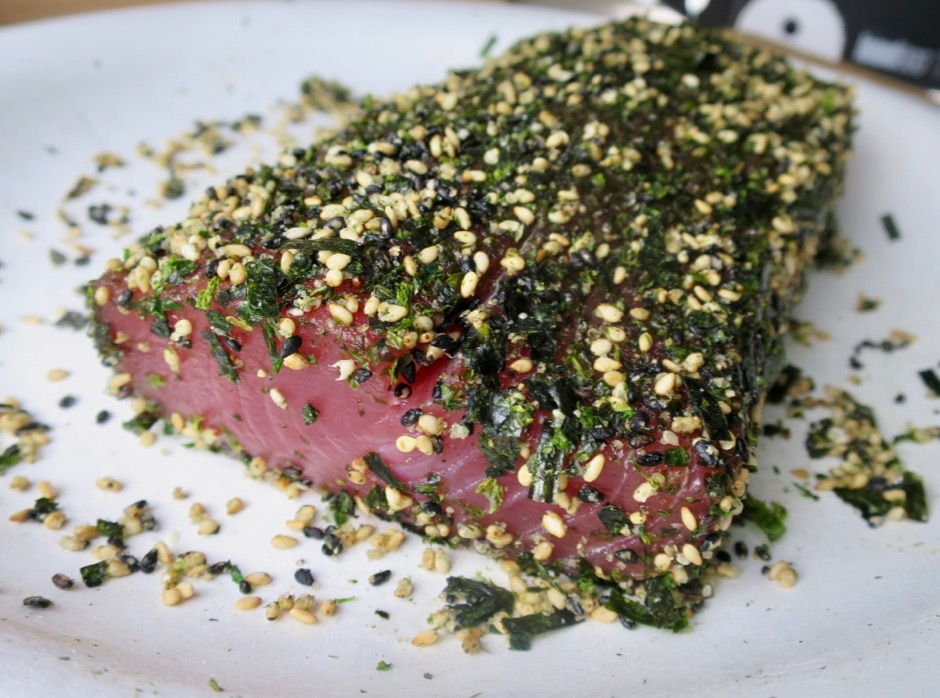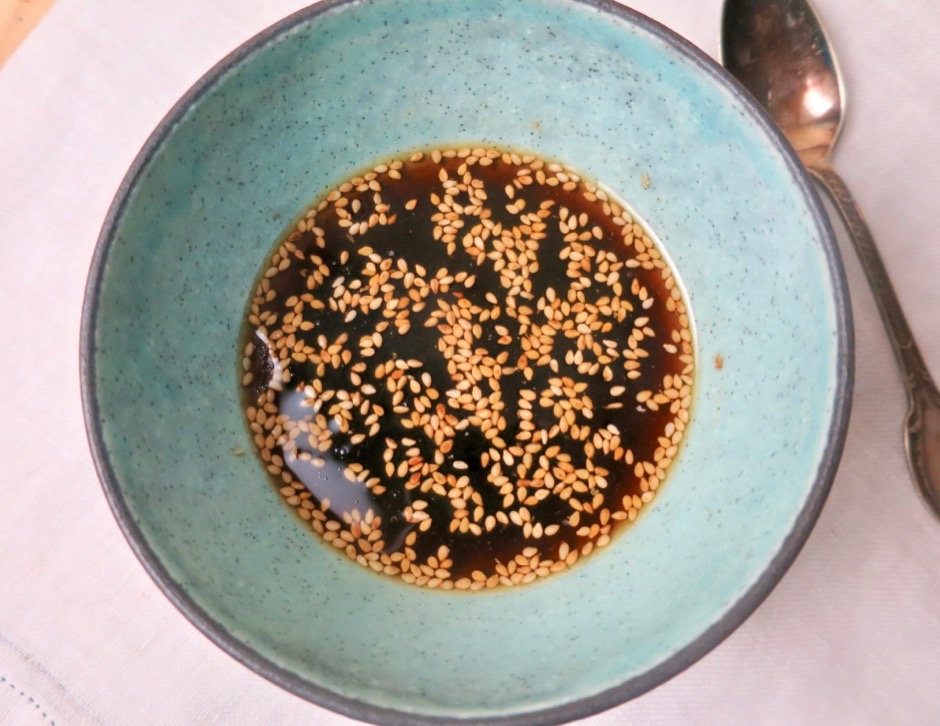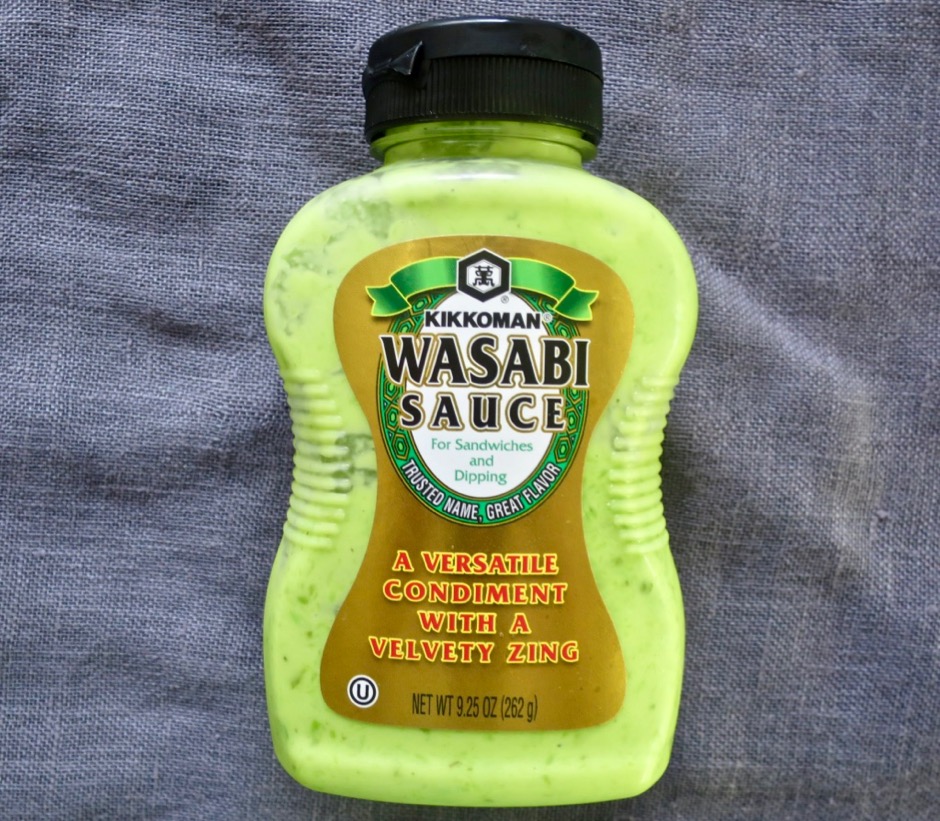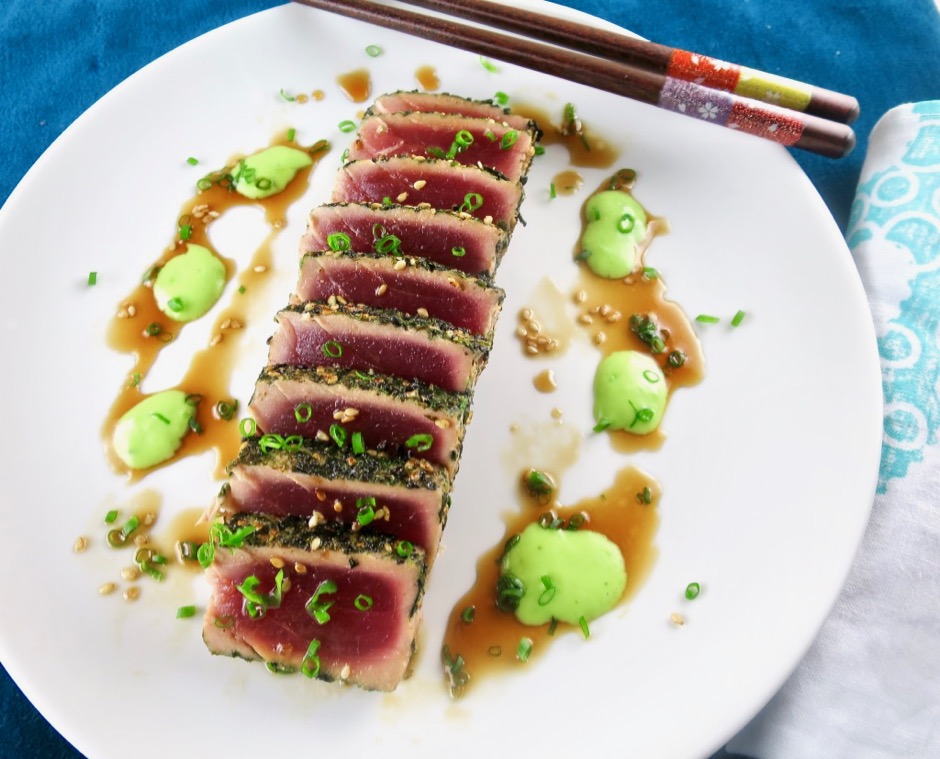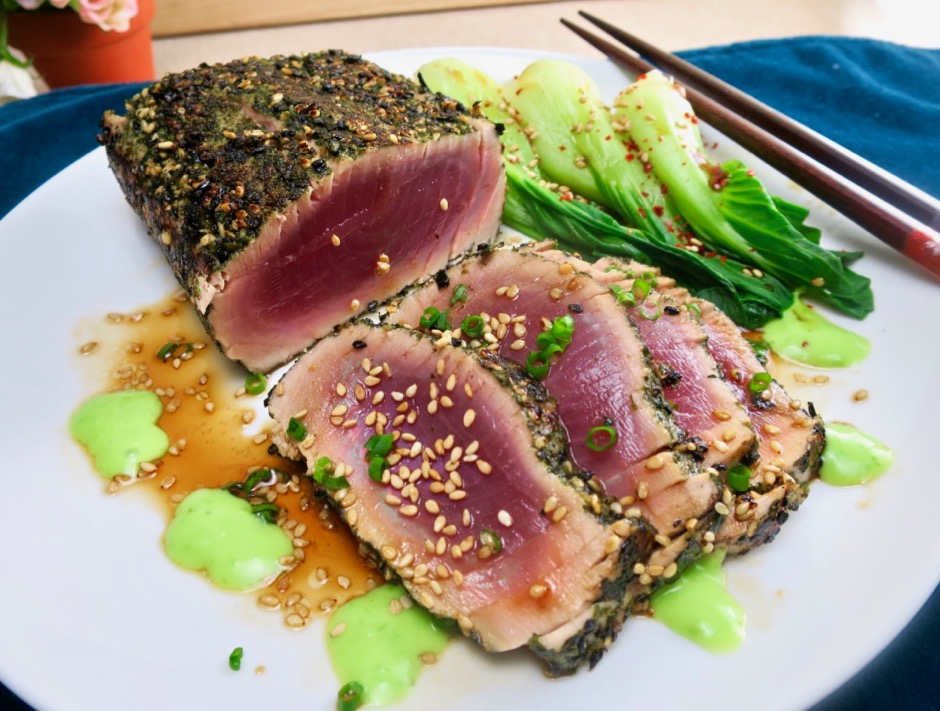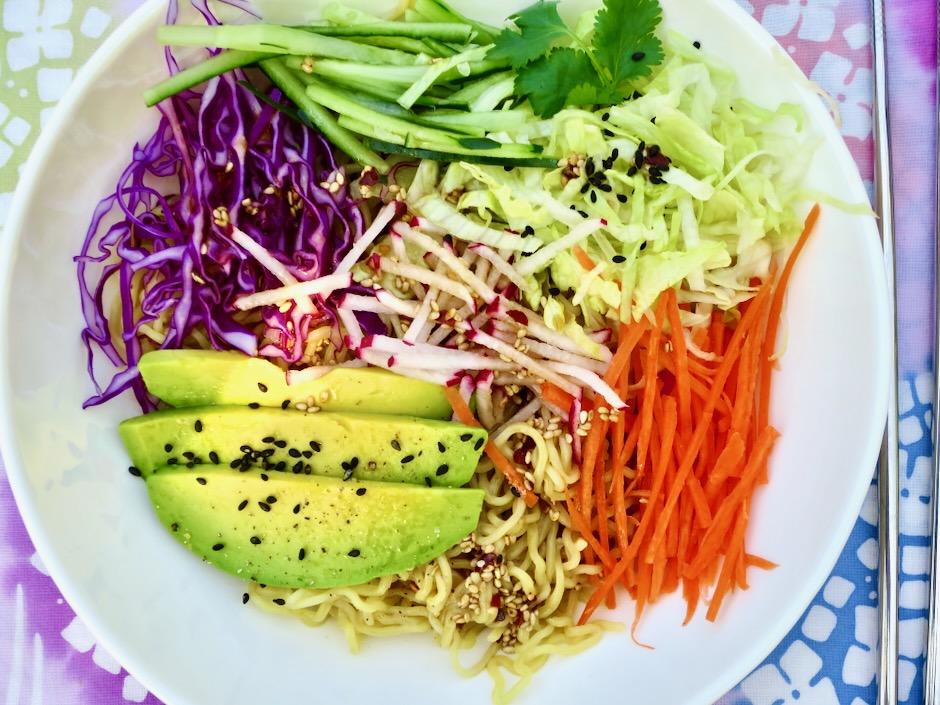
I can’t think of a more refreshing and satisfying combination than crisp vegetables served over ramen, drizzled with a tangy dressing. Although we usually think of ramen served in a steaming hot broth, it can also be used in cold or room temperature dishes like this one. The colorful vegetables are served on a bed of toothsome noodles that make for a delightful lunch.
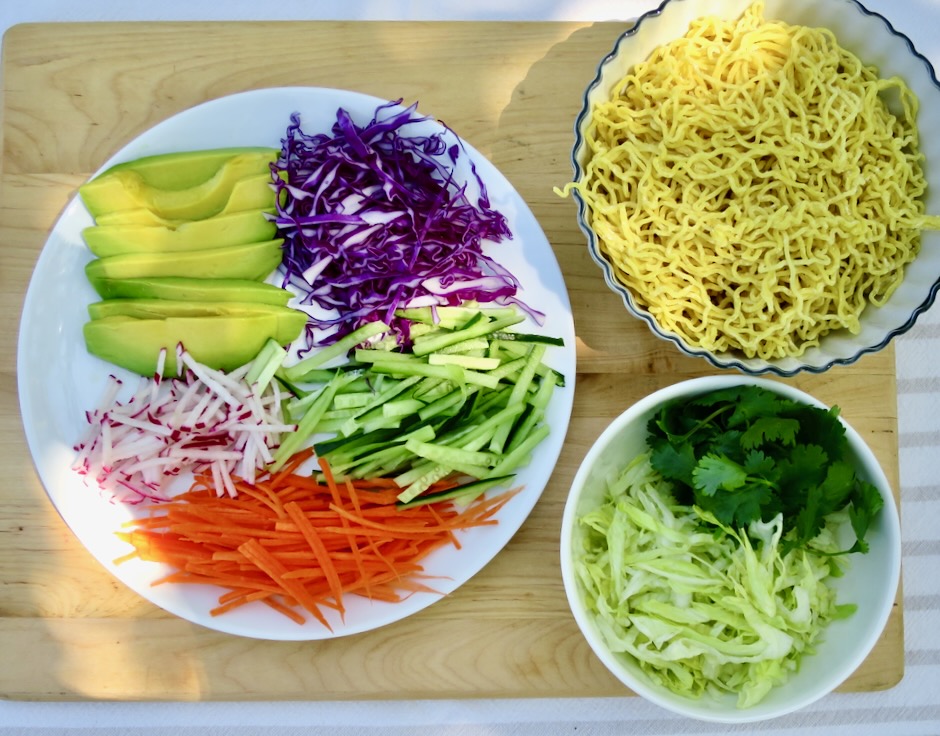
All the vegetables for this dish as well as the dressing can be prepared the night before you plan to serve it (except for the avocado). If you can’t find fresh ramen you may use dried noodles. I used fresh Sun Noodle ramen this time, however, Hakubaku brand dried ramen is a good choice if fresh is not available. If you prefer a wavy noodle, you might choose Ichiban dried ramen. Just be careful not to overcook the noodles so they retain their chewy texture. The noodles are best cooked just before serving.
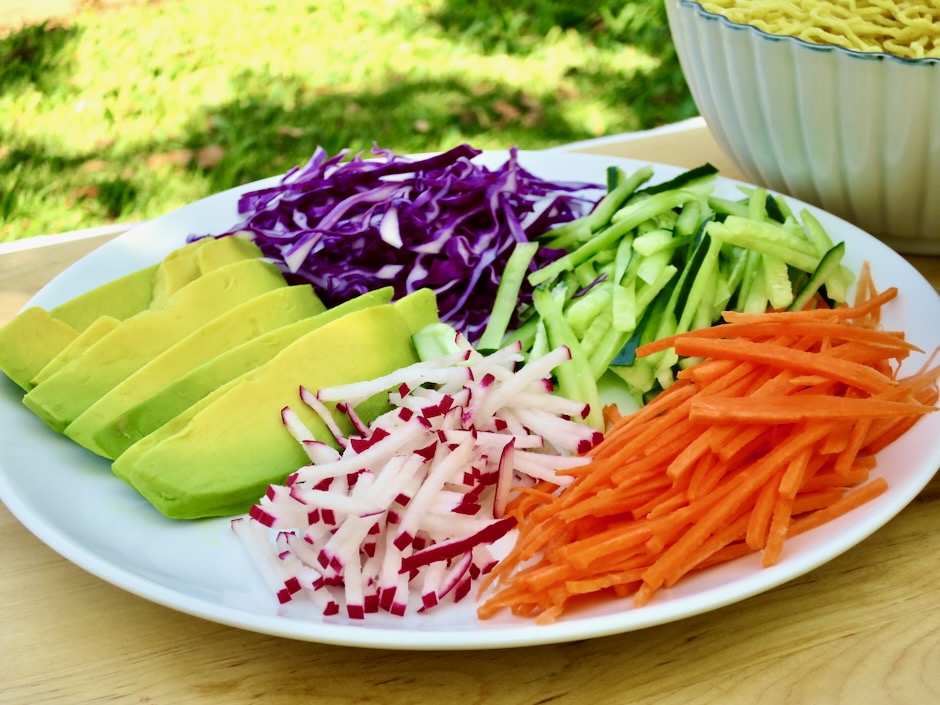
There are lots of options for the salad toppings. I used cabbage, cucumbers, carrots, radishes, and avocado. Other good choices would be watercress, summer squash, green onions. Make your dish colorful.
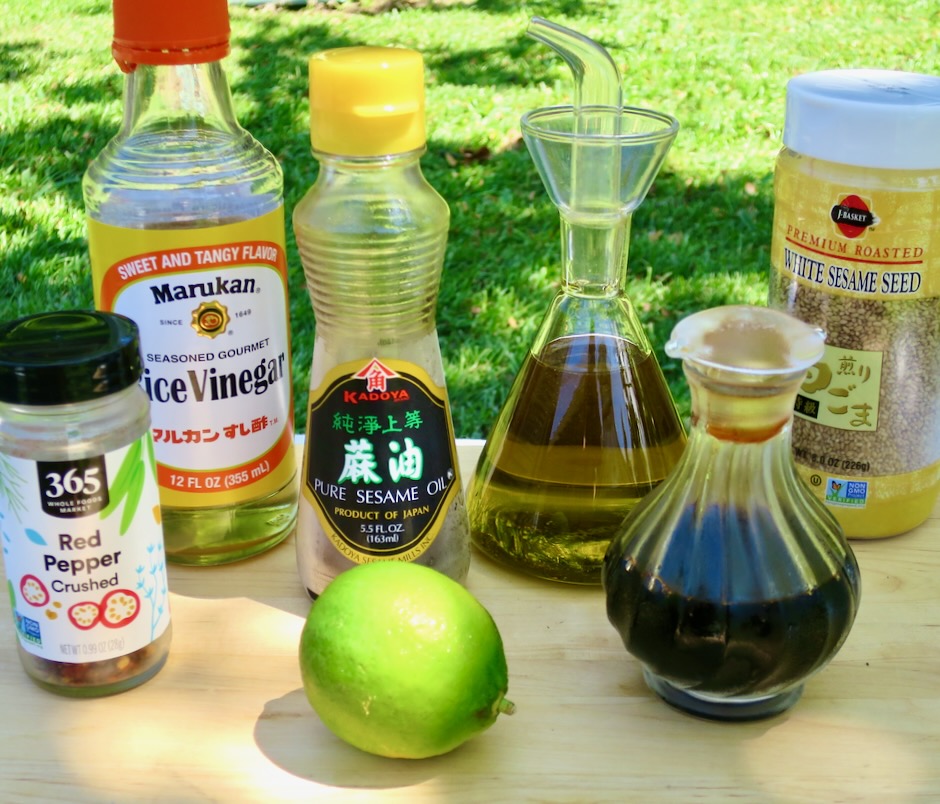
The dressing for this salad uses ingredients that are not difficult to find at your local market. The fresh lime juice makes this dressing pop!
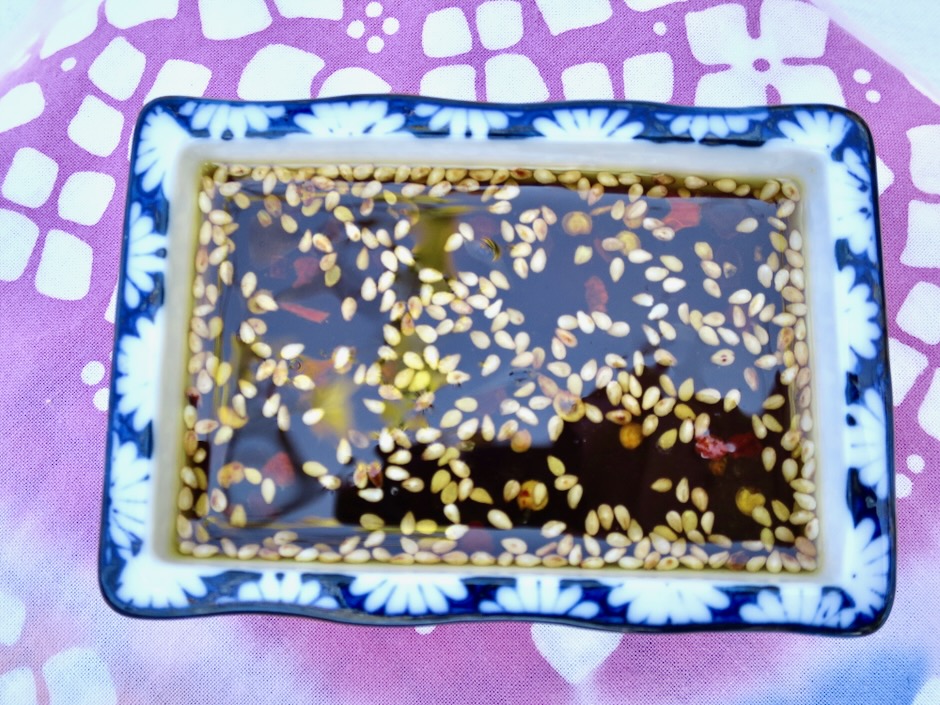
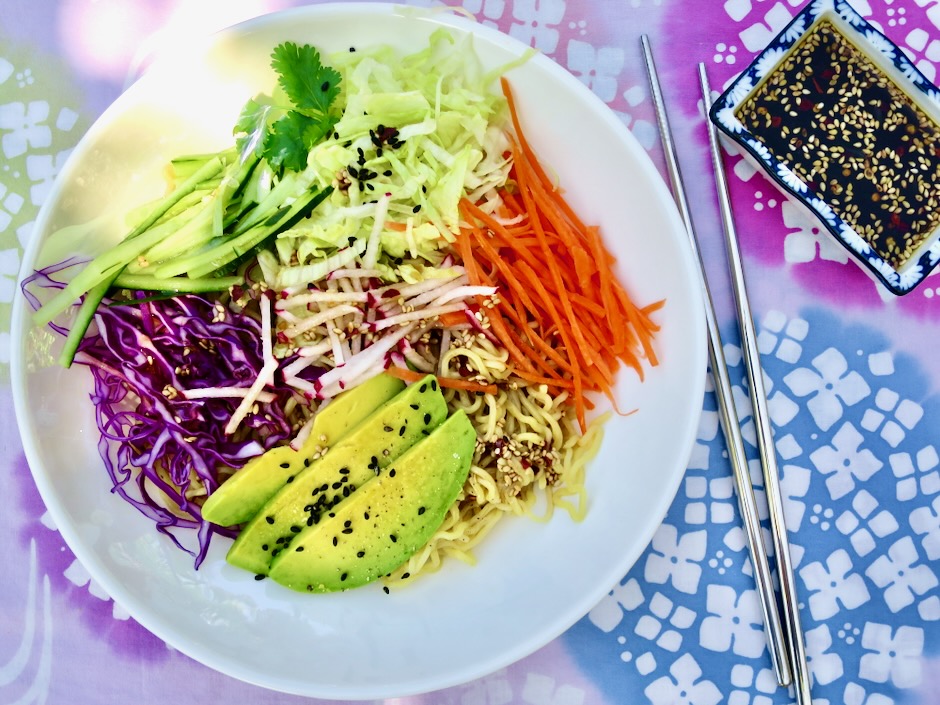
This is a one bowl meal that really hits the spot especially this time of the year when temperatures are soaring.
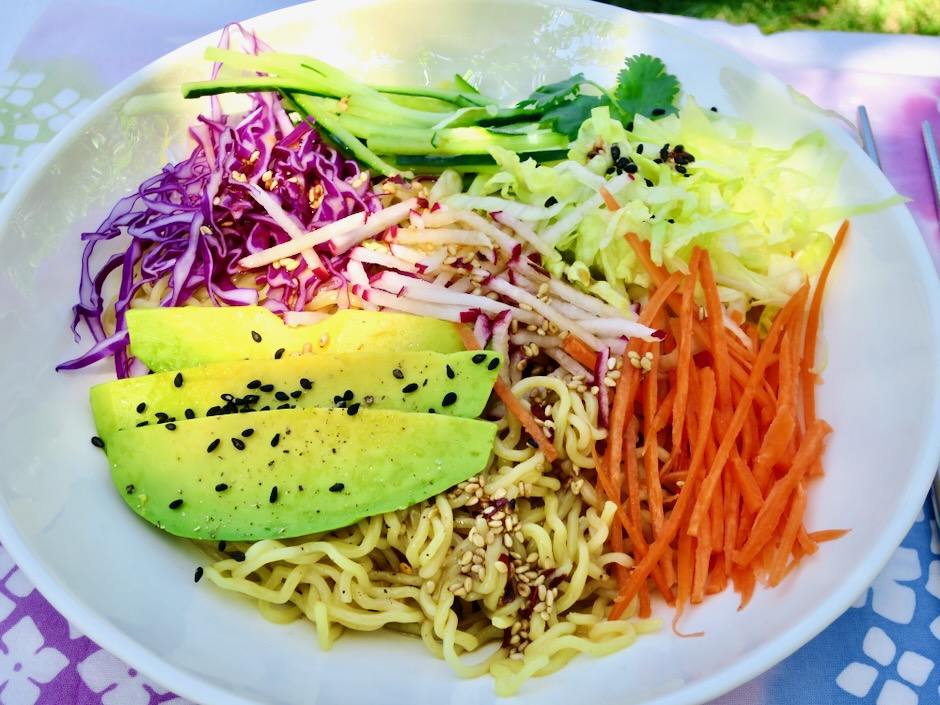
A refreshing ramen salad perfect for a summer meal
Ingredients
1/4 cup seasoned rice vinegar
2 tablespoons extra virgin olive oil
1 1/2 tablespoons fresh lime juice
2 tablespoons low sodium soy sauce
1 tablespoon roasted sesame seeds
1/2 teaspoon red pepper flakes
1 teaspoon roasted sesame oil
10 ounces fresh or 6 ounces dried ramen noodles
2-3 cups shredded or julienned vegetables (radishes, iceberg lettuce, red cabbage, cucumber, summer squash, carrots, scallions, avocado
Directions
- Combine seasoned rice vinegar through sesame oil in a jar. Shake and set aside.
- Cook noodles according to package directions until just al dente. Immediately drain the noodles in a colander and rinse under cold water to stop the cooking. Transfer to a medium bowl, toss with half of the dressing.
- Divide the noodles between bowls. Arrange vegetables over the ramen and serve with remaining dressing.


